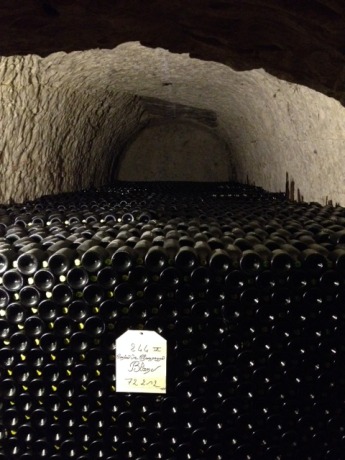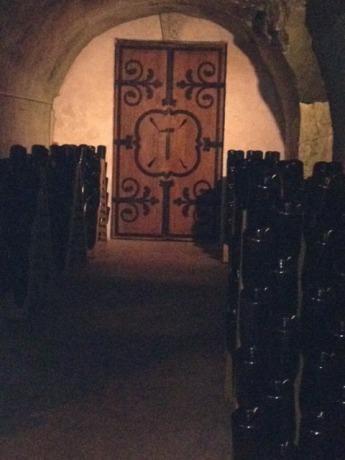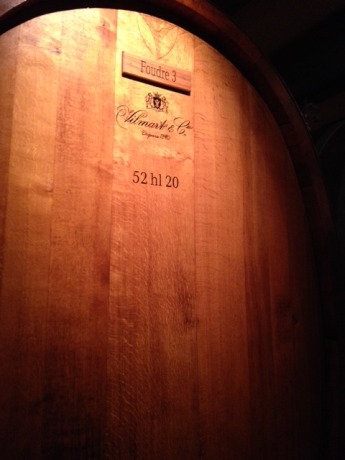Champagne Part I: Taittinger and Vilmart & Cie
As I relayed in my “pre-game post,” my home base during the stay in Champagne was an adorable one bedroom cottage in Broyes, a small but lovely village in the Champagne region. Broyes is roughly a 90 minute drive south of Reims, which most consider the heart of the region. So with my very proper English-accented navigation system directing the way, it was time to taste some bubbly!
Visit #1: Taittinger
I started my journey with one of the largest and most well-known producers (also called houses) in Champagne, Taittinger. Surprisingly, the house is still family-owned and family-run. (Most large houses are now owned by multinational corporations or conglomerates.) Tours and tastings are hosted at their historic cellars in Reims, which were built on the remains of a 13th century monastery. The monastery, in turn, had been built on the site of caves dug by the ancient Romans to excavate chalk stone for buildings. In this cellar, 3 million bottles are stored (mostly large format bottles and their high-end brand, Comte de Champagne). A second cellar is located closer to the center of Reims, and holds 12 million (!) bottles.
Taittinger is unique among the largest Champagne houses not only because it is still family-owned, but also because 50% of the grapes that they use to make their wines come from vineyards that the family owns. (The other 50% are purchased from growers in the area with whom Taittinger has 4-5 year contracts.) Generally, houses as large as Taittinger buy the vast majority of the grapes they use to make their Champagnes, rather than growing their own.
The walk through the Taittinger caves was extensive and impressive. There are many remnants of the former abbey in the caves – stairs that led up to the monks’ living and working quarters, an old underground chapel where the monks could pray when they were working in the caves, and even 3 of the original wooden doors from the abbey, which have been restored.
I thought it was important to see the operations of at least one of the giant houses, and the tour of Taittinger lived up to my expectations of being slick and impressive, but I was more interested in visiting the operations of some smaller producers.
Visit #2: Vilmart & Cie
My next visit was in the village of Rilly-de-Montagne to the producer Vilmart & Cie. Vilmart & Cie produces 120,000 bottles per year, 75% of which they export outside of France – and much of that is to the U.S. Vilmart & Cie was among the producers profiled by the Guild of Sommeliers as a brand that’s smaller but well-respected by sommeliers in the U.S. market.
Although the tasting facility was gorgeous and wines were very good, the tasting experience as a whole was a bit disappointing, as the person who was hosting me didn’t seem terribly interested in engaging with me to discuss the wines and production, and was not very knowledgeable on some of the topics about which I did ask questions.
Contrast that with my visit to Champagne Jeauneaux-Robin, which was a phenomenal experience from start to finish. Owner/winemaker, Cyril Jeauneaux, responded within a few hours of my email request to visit, but said he’d be in Paris for the day, so his co-owner and wife, Clémence, would show me around. And what a delightful visit it was! Next post, I’ll share the story of this fabulous grower Champagne producer. Until then, cheers!



